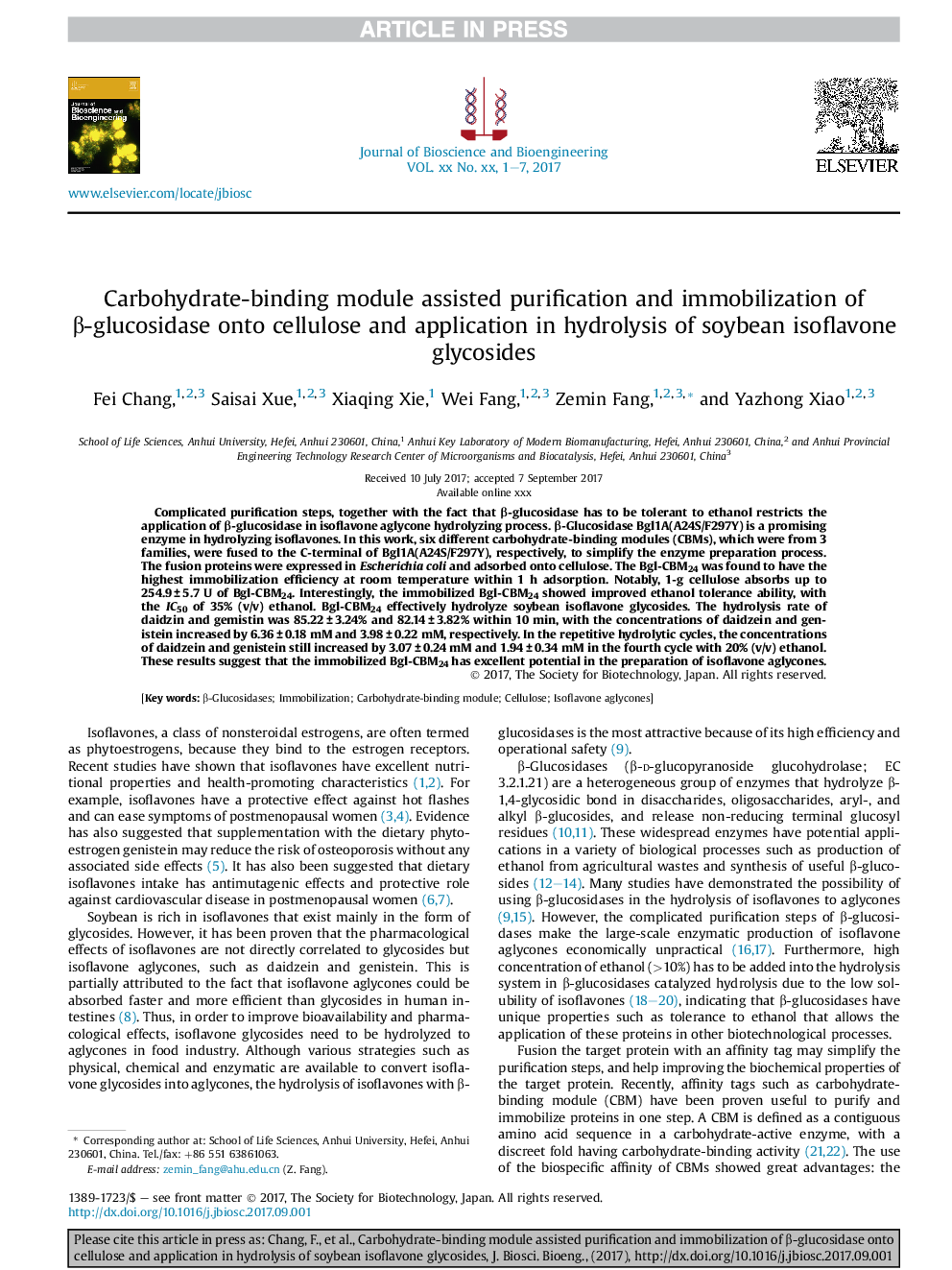| کد مقاله | کد نشریه | سال انتشار | مقاله انگلیسی | نسخه تمام متن |
|---|---|---|---|---|
| 6489979 | 1416545 | 2018 | 7 صفحه PDF | دانلود رایگان |
عنوان انگلیسی مقاله ISI
Carbohydrate-binding module assisted purification and immobilization of β-glucosidase onto cellulose and application in hydrolysis of soybean isoflavone glycosides
دانلود مقاله + سفارش ترجمه
دانلود مقاله ISI انگلیسی
رایگان برای ایرانیان
کلمات کلیدی
موضوعات مرتبط
مهندسی و علوم پایه
مهندسی شیمی
بیو مهندسی (مهندسی زیستی)
پیش نمایش صفحه اول مقاله

چکیده انگلیسی
Complicated purification steps, together with the fact that β-glucosidase has to be tolerant to ethanol restricts the application of β-glucosidase in isoflavone aglycone hydrolyzing process. β-Glucosidase Bgl1A(A24S/F297Y) is a promising enzyme in hydrolyzing isoflavones. In this work, six different carbohydrate-binding modules (CBMs), which were from 3 families, were fused to the C-terminal of Bgl1A(A24S/F297Y), respectively, to simplify the enzyme preparation process. The fusion proteins were expressed in Escherichia coli and adsorbed onto cellulose. The Bgl-CBM24 was found to have the highest immobilization efficiency at room temperature within 1 h adsorption. Notably, 1-g cellulose absorbs up to 254.9 ± 5.7 U of Bgl-CBM24. Interestingly, the immobilized Bgl-CBM24 showed improved ethanol tolerance ability, with the IC50 of 35% (v/v) ethanol. Bgl-CBM24 effectively hydrolyze soybean isoflavone glycosides. The hydrolysis rate of daidzin and gemistin was 85.22 ± 3.24% and 82.14 ± 3.82% within 10 min, with the concentrations of daidzein and genistein increased by 6.36 ± 0.18 mM and 3.98 ± 0.22 mM, respectively. In the repetitive hydrolytic cycles, the concentrations of daidzein and genistein still increased by 3.07 ± 0.24 mM and 1.94 ± 0.34 mM in the fourth cycle with 20% (v/v) ethanol. These results suggest that the immobilized Bgl-CBM24 has excellent potential in the preparation of isoflavone aglycones.
ناشر
Database: Elsevier - ScienceDirect (ساینس دایرکت)
Journal: Journal of Bioscience and Bioengineering - Volume 125, Issue 2, February 2018, Pages 185-191
Journal: Journal of Bioscience and Bioengineering - Volume 125, Issue 2, February 2018, Pages 185-191
نویسندگان
Fei Chang, Saisai Xue, Xiaqing Xie, Wei Fang, Zemin Fang, Yazhong Xiao,